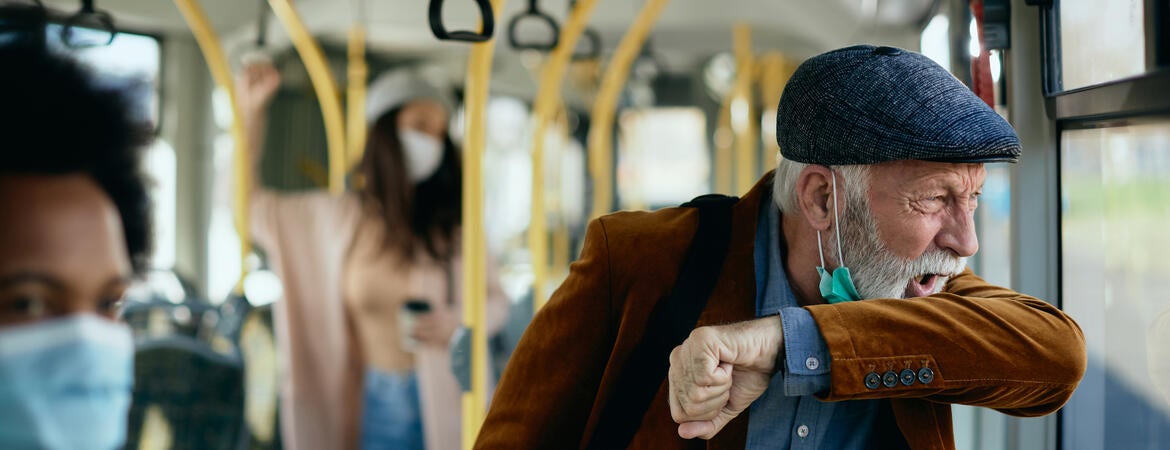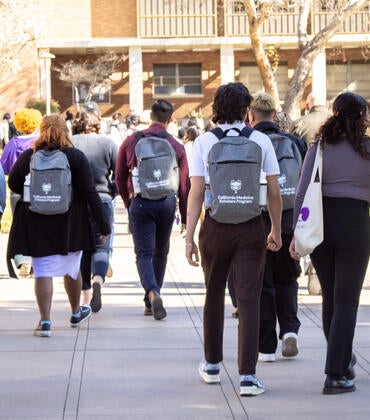
Imagine a future with safer bars, restaurants, health clinics, and other public indoor spaces — where the risk of the spread of infectious diseases such as COVID-19 is greatly minimized.
Research by Akula Venkatram, a mechanical engineering professor at the University of California, Riverside, suggests this could happen in the not-too-distant future. An important step, he said, is a simple change in the direction of the air forced through indoor gathering spaces by heating, air conditioning, and ventilation systems.
Fresh air should be emitted from floor vents, while the outgoing air should be removed with ceiling vents. Such systems would allow for a continuous upward movement of air that would most expediently carry away virus-containing microdroplets exhaled by infected people.
“You don't want to have horizontal transport,” which can spread viruses from person to person, Venkatram said. “You should encourage vertical transport of air. It doesn't matter whether the air is coming from the top or bottom, but it's easier for it to come from the bottom because your breath is warm. So it goes up automatically. You might as well take advantage of that.”
Venkatram’s conclusions are based on a fresh look at data from several previous studies about the behavior of aerosols, or airborne particles, in indoor settings. Venkatram and his collaborator, Jeffrey Weil of the National Center for Atmospheric Research in Boulder, Colorado, published their findings and recommendations for ventilation systems last year in a paper published in Indoor Air titled “Modeling Turbulent Transport of Aerosols Inside Rooms Using Eddy Diffusivity.”
For his analysis, Venkatram tapped his decades of experience researching how air pollution behaves outdoors. This work includes his collaboration with the U.S. Environmental Protection Agency to develop pollution dispersion models that are used by regulatory agencies to estimate the air quality impact of pollutants emitted by sources such as power plants and vehicles on roads.
Venkatram and Weil examined the transport of virus-carrying aerosols emitted from an infected person that behave as passive tracers of air motion in a room. The simple acts of breathing, talking, walking, standing up, or just moving your hands stirs ups air, and creates random turbulent motion that disperses these aerosols across a room. Consider what happens when someone lights up a cigarette, he said.
“As soon as you smoke, you can see smoke going all over the place,” he said. Forced or natural ventilation enhances this turbulent motion.
Venkatram and Weil used a concept called “turbulent diffusivity” to model transport by turbulent motion in a room. They used mathematical models to interpret data from experiments that released aerosols inside rooms with varying ventilation rates.
“We looked at the transport as soon as you emit stuff, and how the concentration of aerosols falls off with distance from the source,” Venkatram said. “What you are breathing in depends on the number of aerosols per unit volume, multiplied by the volume you breathe in. So, the viral load depends on the total amount of viruses — the dose — that you inhale.”
The dose falls off with distance from the source, he said. The dose at 2 meters from a source is still half of that at 1 meter, he said
Venkatram said the paper does not rely on models that make simplistic assumptions about the behavior of indoor pollutants. Such models, still used by researchers today, assume that emitted aerosols are instantaneously mixed through the volume of a room so that the concentrations are equal. These models provide little guidance on the engineering of ventilation systems to reduce the spread of virus laden aerosols, he said.
Venkatram and Weil showed that an increased ventilation rate does not always lead to reduced doses of the pollutant someone may breathe. Their models suggest that ventilation, especially that creating directed air motion in the room, is not always beneficial and might make matters worse by spreading emissions.
The conclusion supports a Chinese study that blamed an air conditioning system for the spread of coronavirus in a restaurant in Guangzhou, China’s third-largest city. Done in the early days of the COVID-19 pandemic, this study found that 10 people became infected when they sat at tables downwind of an infected person from the pandemic’s epicenter in Wuhan.
The results presented by Venkatram and Weil also support a body of evidence that face masks reduce the risk of infection, especially when worn by an infected person. Researchers have well established that masks prevents the high velocity ejection of liquid droplets during coughing and sneezing. What is not appreciated, the study says, is that a mask also increases the size of the puff of exhaled air, which reduces the concentration of droplets at the source, and also facilitates the subsequent dilution of the puff by turbulent eddies as it is transported across a room.
Upward ventilation would then further enhance safety by carrying away the virus-laden droplets before they can infect another person.
Header image by Getty Images.




